5 Tips for Photographing the Northern Lights
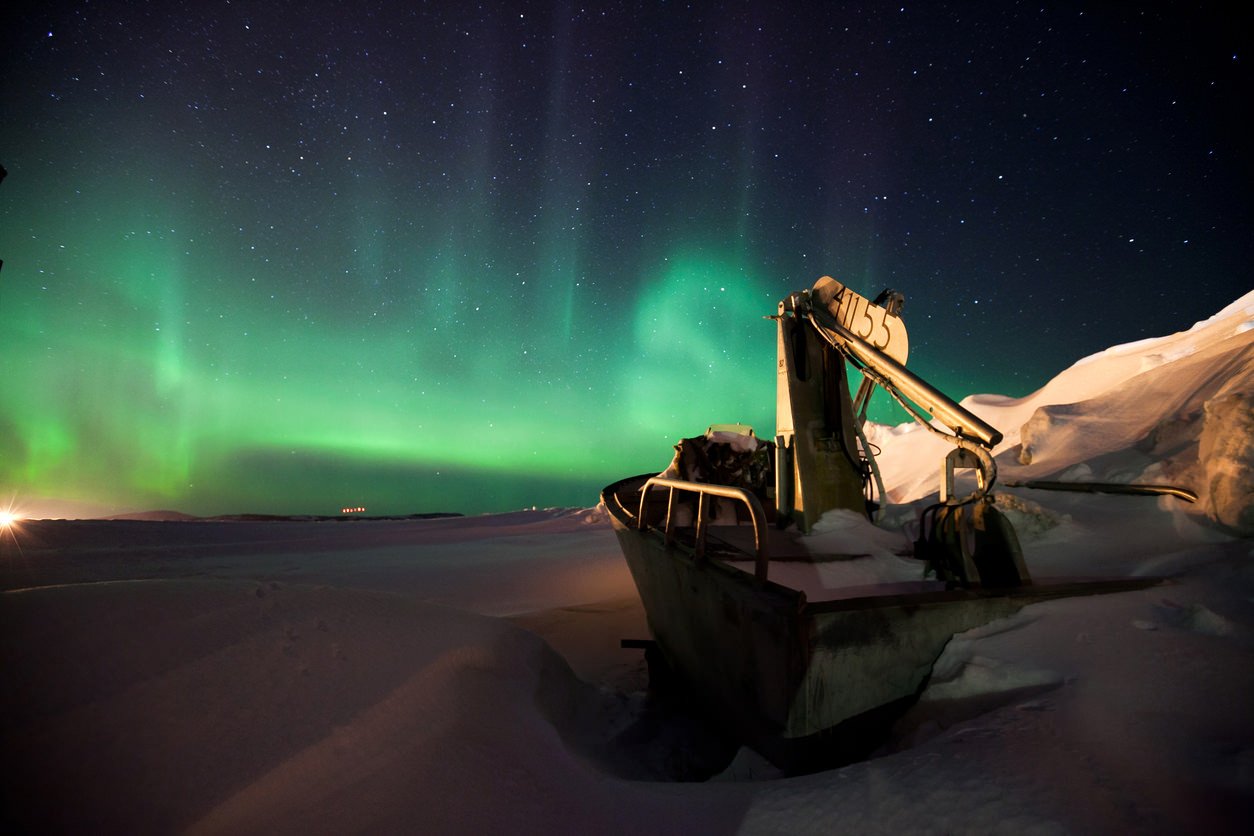
I'm assuming that if you're reading an article about photographing the Northern Lights that you have some knowledge of what they are.
But if you're uninitiated, the Northern Lights occur because particles from the sun collide with the Earth's atmosphere.
As a result of those collisions, light is created, often green in color, but sometimes yellow, red, blue, and purple as well.
The color that's created depends on the gas the particles collide with: oxygen creates greens and yellows while nitrogen produces red, blue, and purple.
Because both the particles from the sun and the gasses in the atmosphere are moving, the lights also have the appearance of moving, often being described as dancing across the sky.
It's a sight to see, that's for sure. It's also a lot of fun to photograph.
Here are five quick and easy tips that will help you get better photos of this incredible phenomenon.
Location and Timing
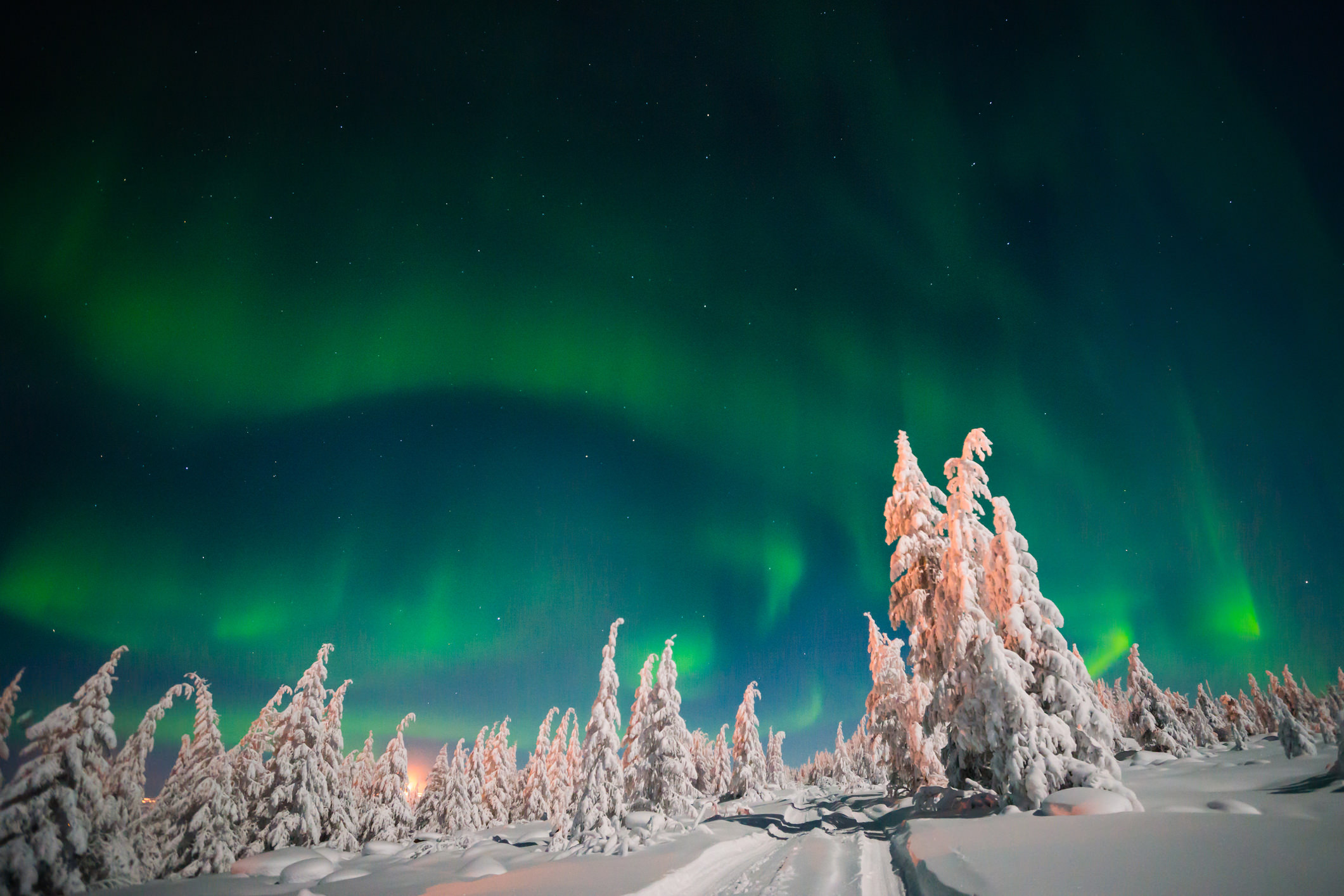
Though the Northern Lights can be seen relatively far south like the northern continental United States, certainly the better bet is to travel northward, to Canada or Alaska.
These locations are much closer to the magnetic poles of Earth, creating a much more vivid light show.
The best time of year to see the Northern Lights is in winter, November to March, when the cold, cloudless skies provide an unobstructed view of the dancing lights.
Naturally, traveling away from urban areas to minimize light pollution is another top tip.
The problem, though, is that planning these kinds of outings can be a little overwhelming.
That's why we recommend joining up with Special Interest Tours for a six-day tour of Alaska.

The great thing about photographing the Northern Lights as part of a tour group is that you not only have everything planned out for you, but you get to rub elbows with other Northern Lights enthusiasts.
Better still, Bob Berman, a world-renowned astronomer, and Dr. Neal Brown, a former professor and expert on the Northern Lights, will be along for the ride to provide detail-rich and interesting learning opportunities.
The tour takes you right into prime Northern Lights territory and at just the right time - mid-March.
That means you've got the location, the timing, and the expert insights ready to go to help you get stunning Northern Lights images.
The tour also includes fun activities like sled dog rides, a visit to the Chena Hot Springs, private lectures with Dr. Brown and Mr. Berman, and, of course, nighttime coach rides into the Alaskan wilderness to witness and photograph the Northern Lights.
The tour is scheduled for March 11-16, 2018, with an optional extension March 8-10. Visit Special Interest Tours for further details.
Include Foreground Interest
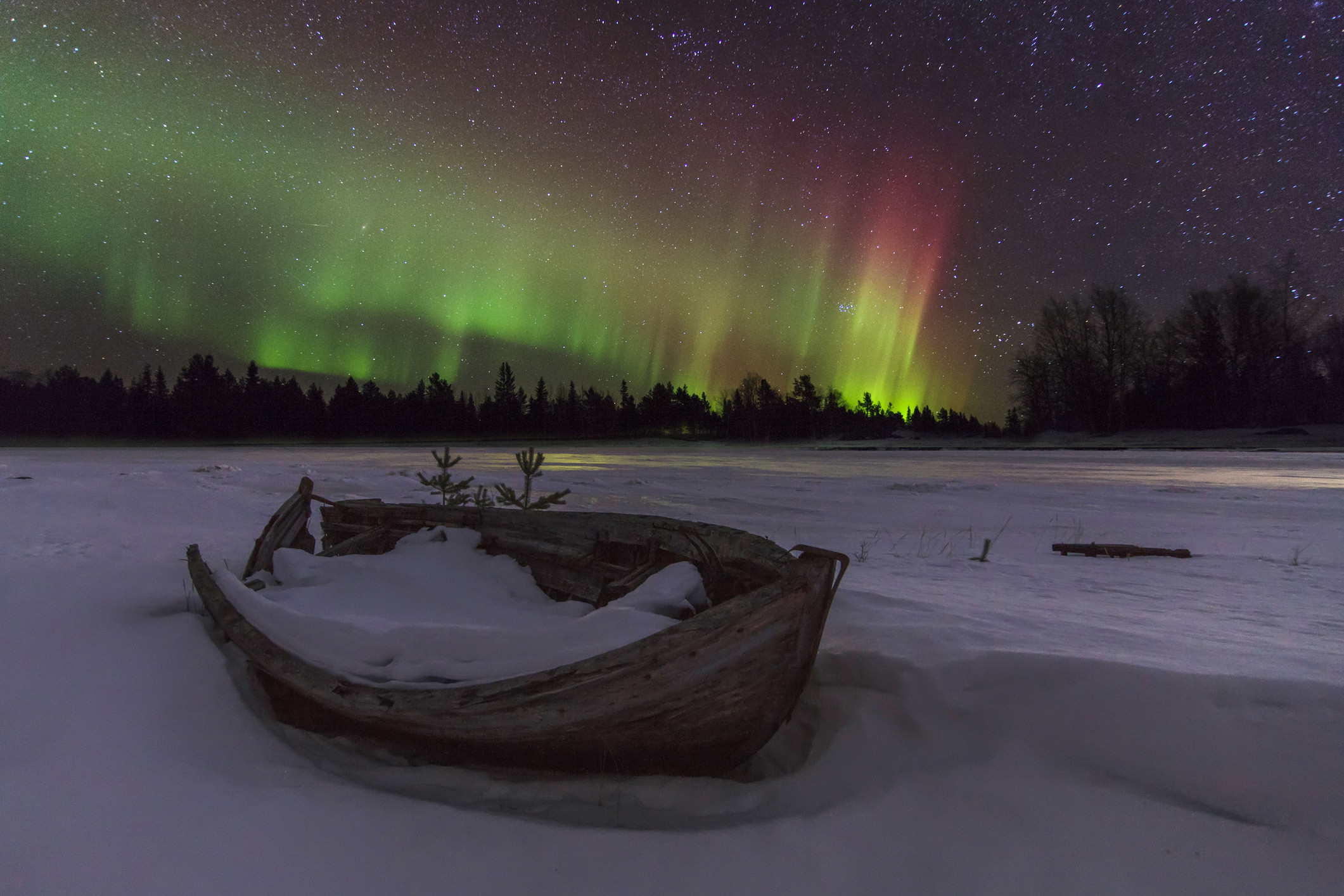
Just like when you photograph any landscape, it's important to consider the inclusion of foreground interest in your shots of the Northern Lights.
This serves a couple of purposes.
First, foreground interest draws the eye into the shot. By having something eye-catching in the foreground, it invites viewers to have a closer look at the image.
Second, because the Northern Lights are so visually powerful, you need something to balance out the shot. Foreground interest accomplishes this.
In the image above, the abandoned boat provides that balance between foreground and background, helping to create a scene that is also more interesting from front to back.
You MUST Have a Tripod and Camera Remote
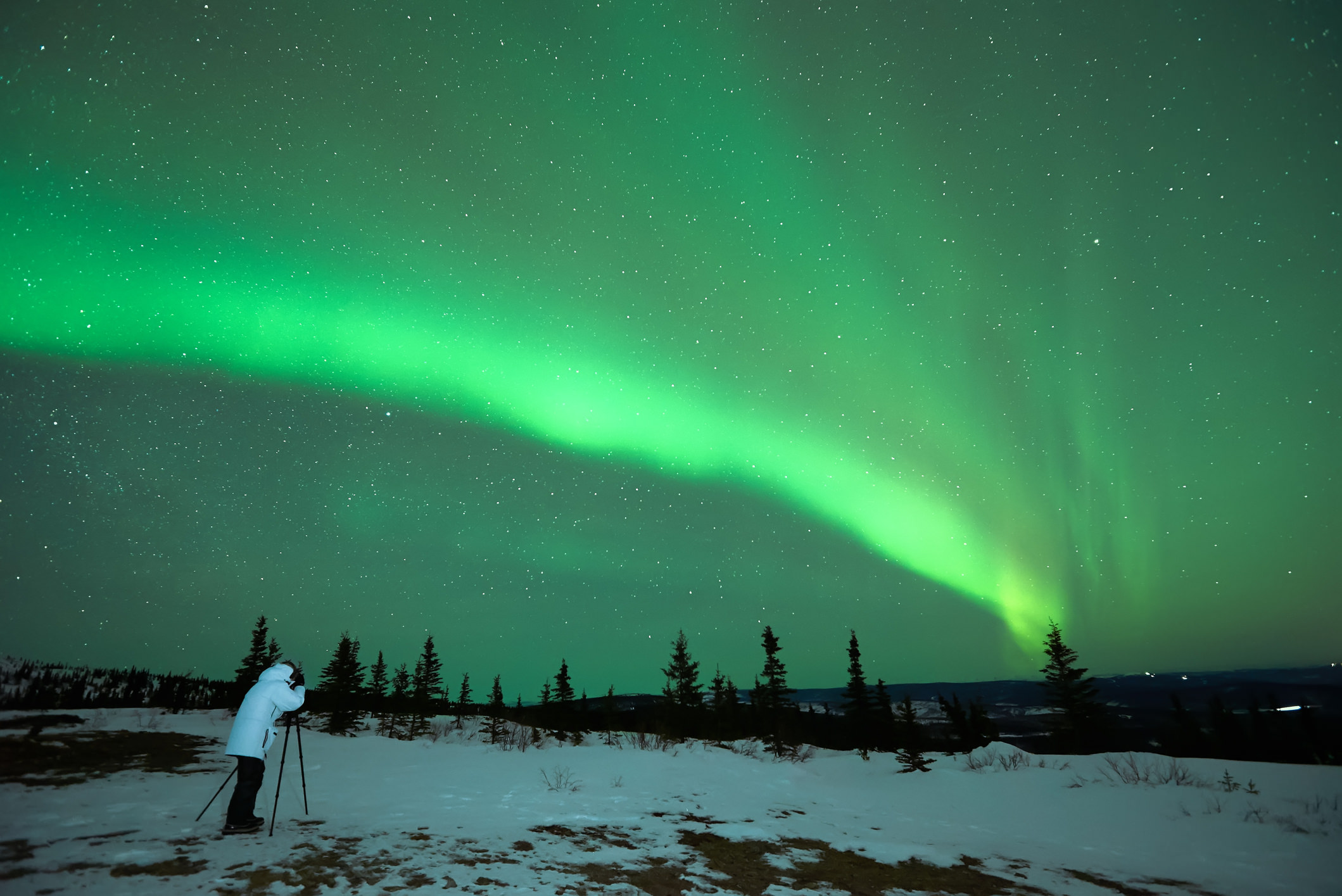
There are no ifs, ands, or buts, about it - when photographing the Northern Lights, your camera needs to be mounted on a tripod and you need to have a camera remote to fire the shutter.
Giving your camera the most stable base possible will allow you to also get the sharpest photos possible.
Although there's no specific set of camera settings for every single instance of the Northern Lights, you will certainly be working with shutter speeds that are into the realm of 30 seconds or more.
With such long shutter speeds, you need to do everything possible to ensure your camera doesn't move.
A sturdy tripod and a camera remote will go a long way in helping you get the sharpest photos.
Use Live View
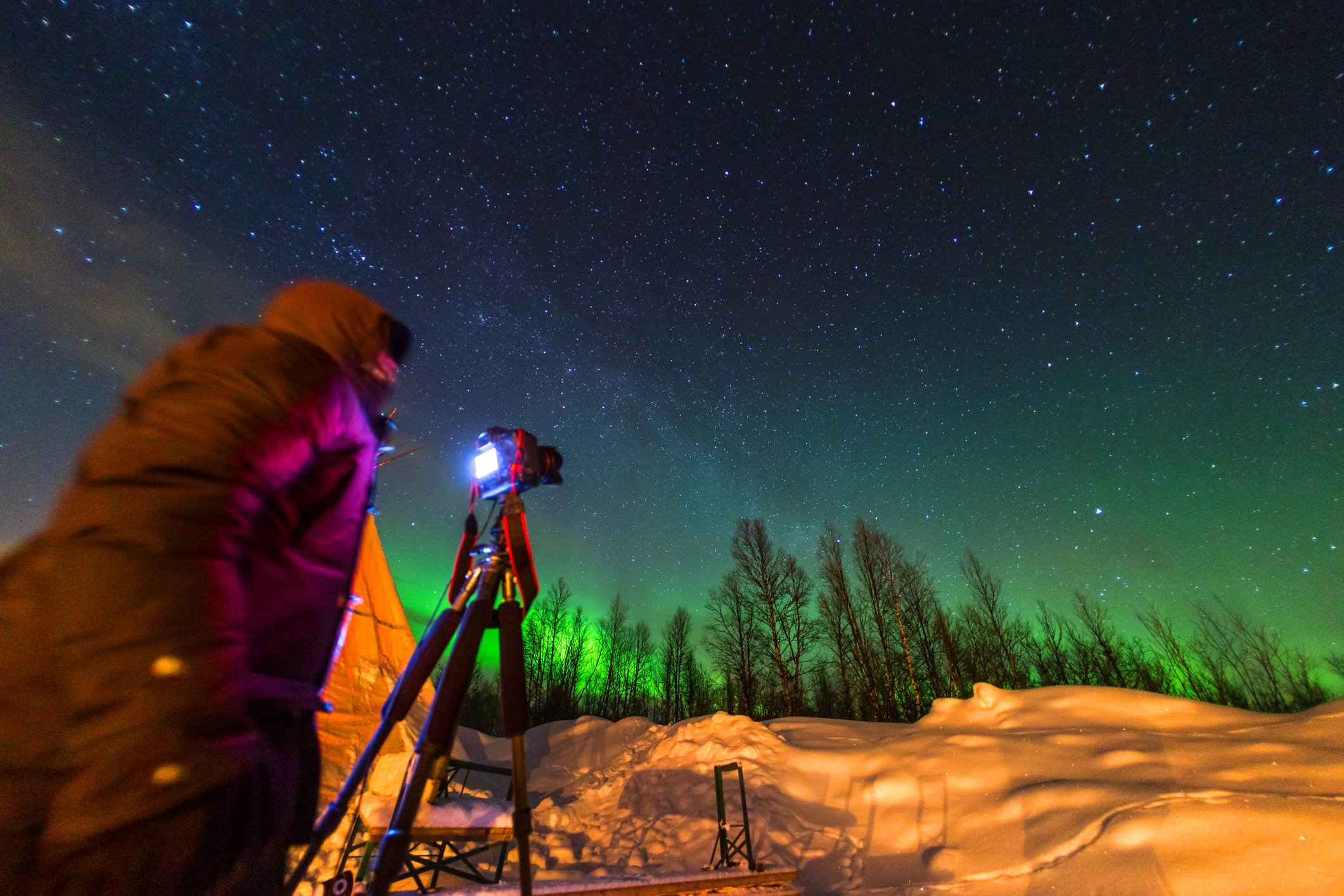
Another tip for getting ultra-sharp photos is to use Live View to focus your shots.
Live View gives you the chance to set your focus, and then zoom in to check if everything is sharp.
A good rule of thumb is to set your focus at infinity or just slightly less, that way everything from foreground to background is nice and sharp.
Just be sure you set the focus after you set your camera settings.
Shooting in manual mode is the way to go, so you'll need to do some test shots to dial in the best aperture, shutter speed, and ISO. Dialing in those settings prior to focusing the shot will help you avoid accidentally messing up the focus.
Use a Wide-Angle Lens
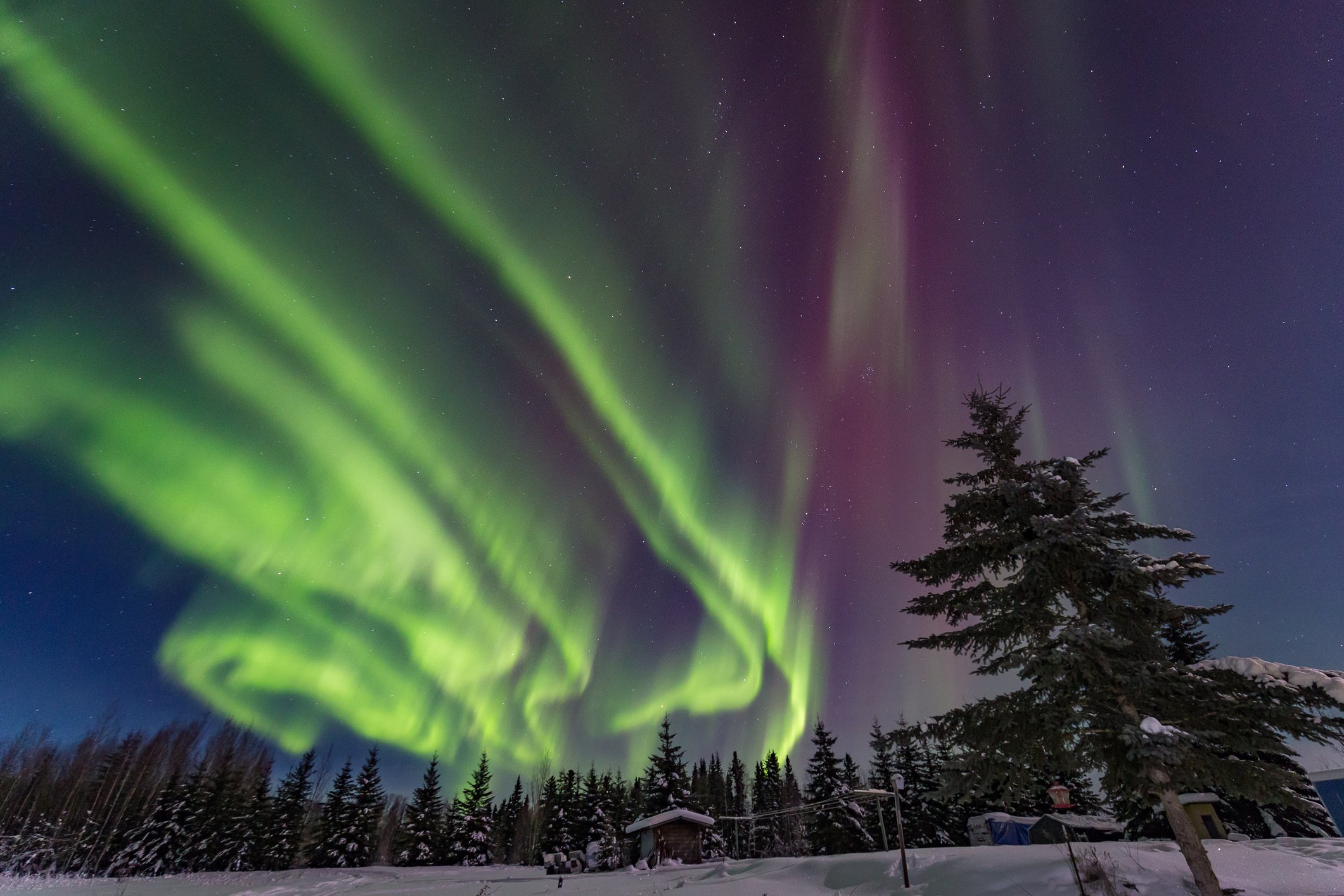
Wide-angle lenses are ideal for photographing the Northern Lights because they allow you to capture the size and scale of both the lights and the landscape below them.
You don't need a super ultra wide lens, but something in the range of 14-24mm is a good bet.
If you don't already have a wide-angle lens, do some shopping around and find one that's got a large maximum aperture. You want to be able to collect as much light as possible by opening the aperture, that way you can minimize your ISO setting and avoid photos full of digital noise.
What's more, that wide-angle view allows you to incorporate more of the scene, like including foreground interest as discussed above.
With these simple tips, you'll be set to take better photos of the Northern Lights come the fall and winter.
See these and other tips on getting better photos of the Northern Lights in the video below by John E. Marriott:
We Recommend
A Quick Guide to Photographing Colorado Landscapes
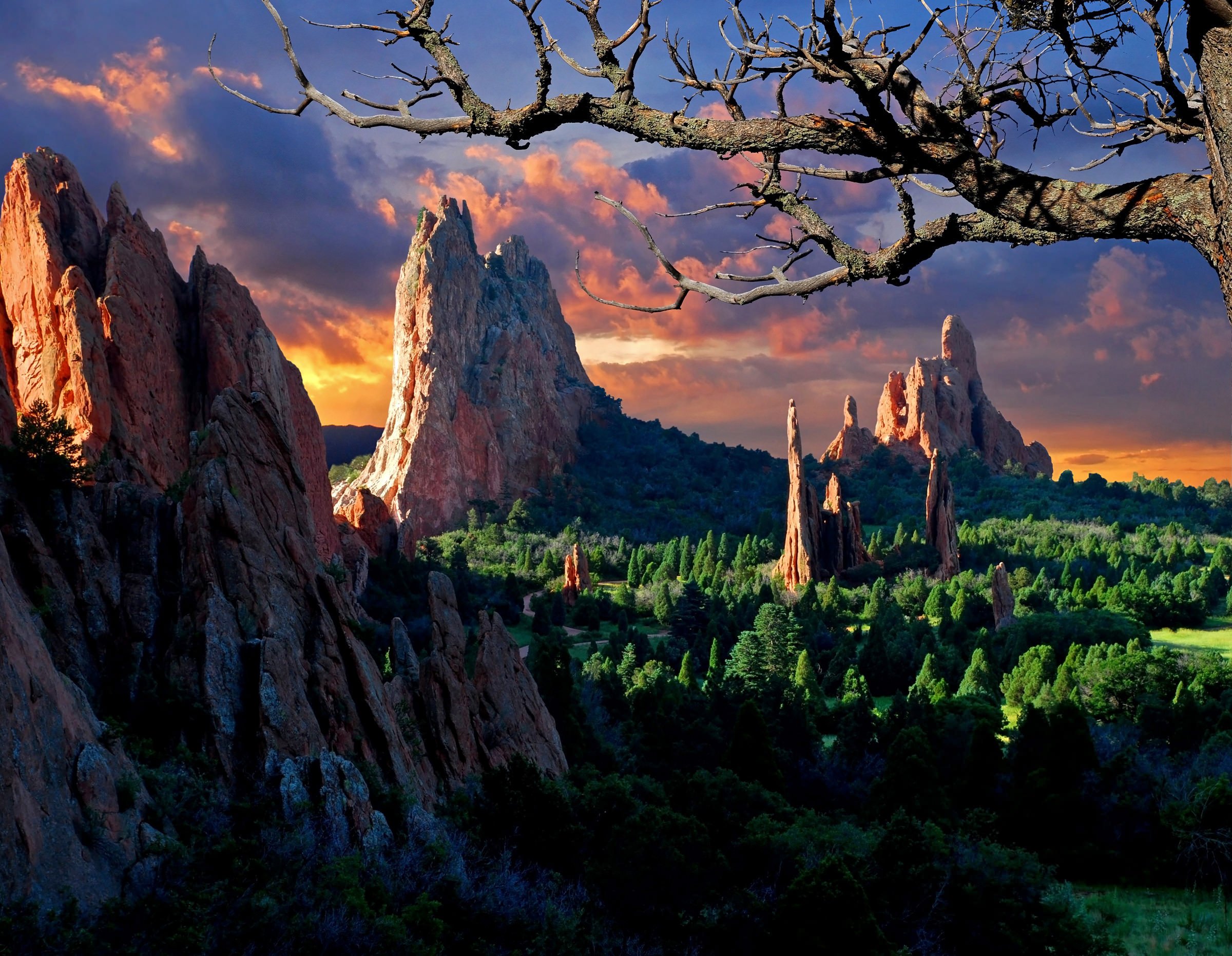
It's been awhile since I've been to Colorado...
I need to change that.
It's one of the most beautiful states I've been to, but that's to be expected since I'm a lover of landscape photography.
What's great about Colorado is that there is so much to see in such varied climates. You can photograph snow-capped mountains in the morning, have lunch in a quaint mining town, and then spend the afternoon in the desert taking photos of wonderful and bizarre formations that look more at home in New Mexico or Arizona.
Better still, Colorado's landscapes are vast, giving you plenty of opportunities to see the beauty of the state without having to fight for position with other photographers to get the shot you want, assuming you're visiting at the right time of year, of course.
If you're fond of creating landscape photos, let me give you a few tips for maximizing your experience while visiting the Centennial State.
Incorporate Human Touches
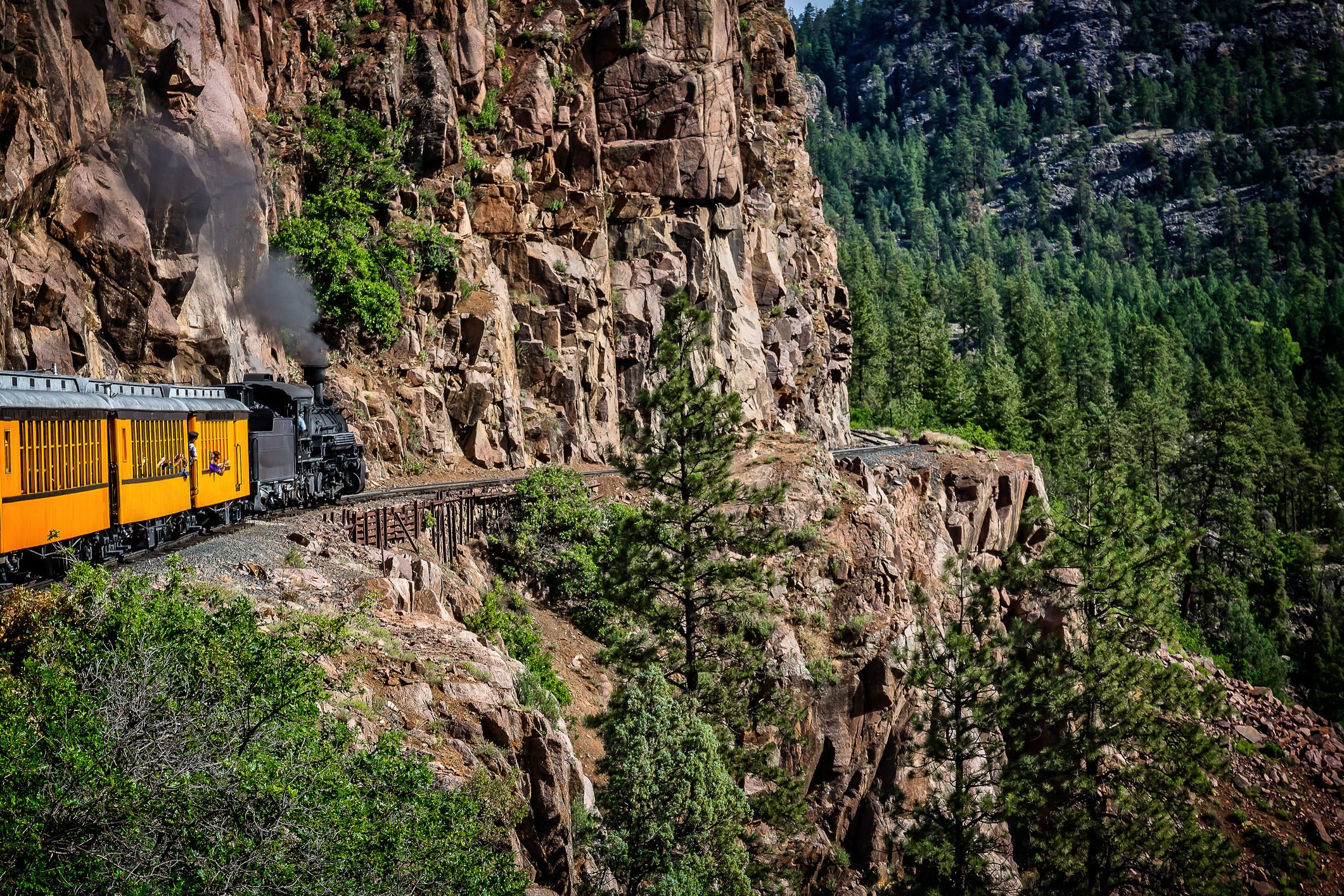
I know some landscape photography purists that balk at the idea of incorporating human elements into their photos.
For them, the term "landscape photography" has a strict interpretation that means only natural elements should be included in the photo.
I get where they're coming from, but I don't really agree with their point of view.
After all, the interaction between us and the environment can be a beautiful thing.
Besides, how many landscapes do you come across that haven't been touched or altered by humans in some way?
My theory is that landscape photographers should embrace the human-environment interaction in their photos.
Now, I'm probably not going to spend a lot of time taking photos of strip mines or logging camps - those might represent some of the more unsavory ways we interact with the environment.
Incorporating a road, a bridge, or a railroad into the shot, though, can make for an interesting photo that highlights the beauty of nature and the ability of humans to harness it.
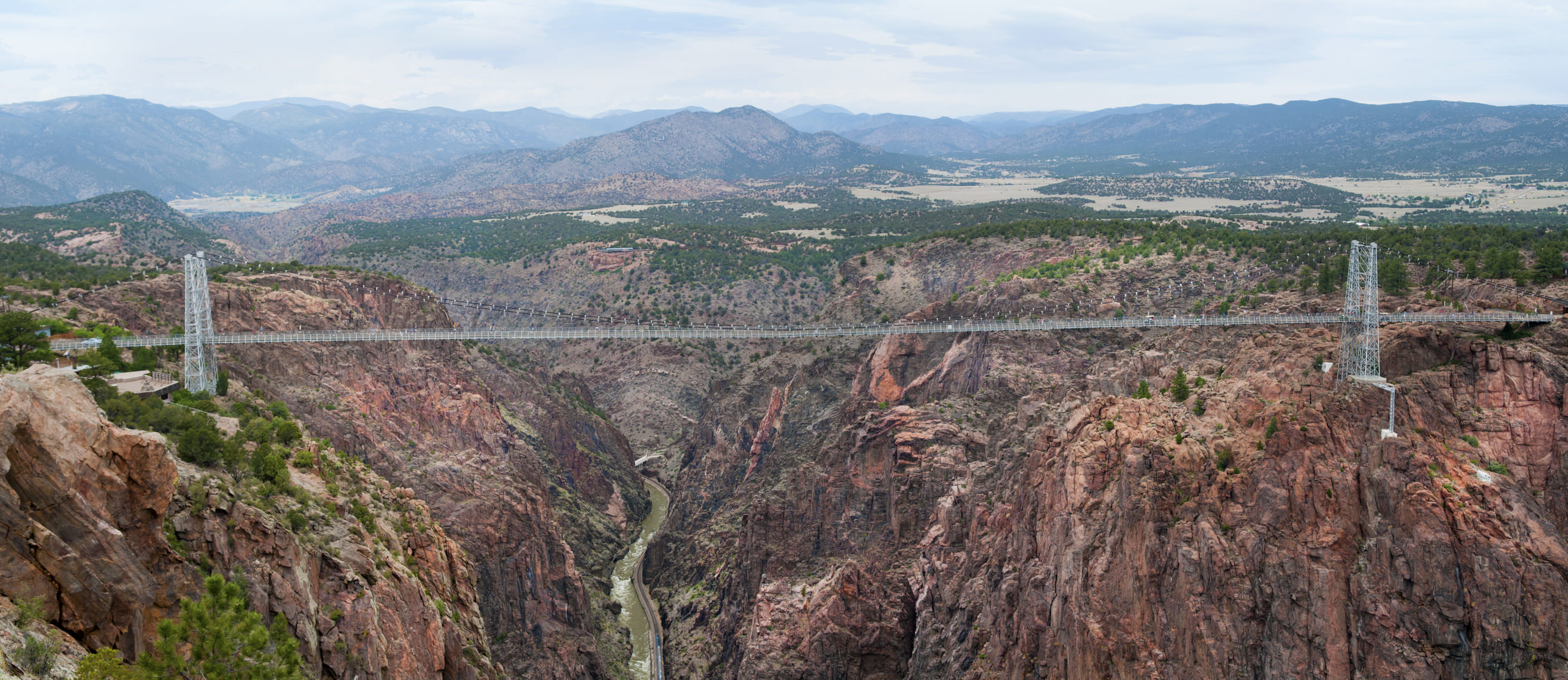
In looking at the photos above of the railroad and the Royal Gorge Bridge, you can see the value of including these features in a landscape photo.
In the case of the railroad, the tracks and the train itself act as a leading line, taking our eye along the sheer cliffside and deeper into the shot. The pop of yellow and the smoke from the train adds additional visual appeal to the shot as well.
In the case of the bridge, we get a better sense of the sheer size of the Royal Gorge, given how tall and wide the bridge is.
In that regard, these manmade elements don't just add visual interest; they also help us understand the grandeur of the scene we're viewing by giving a better sense of scale to the shot.
So, despite what the purists say, don't automatically discount adding people or manmade objects in your landscape photos. It might just make those photos more interesting!
Find Unique Topography
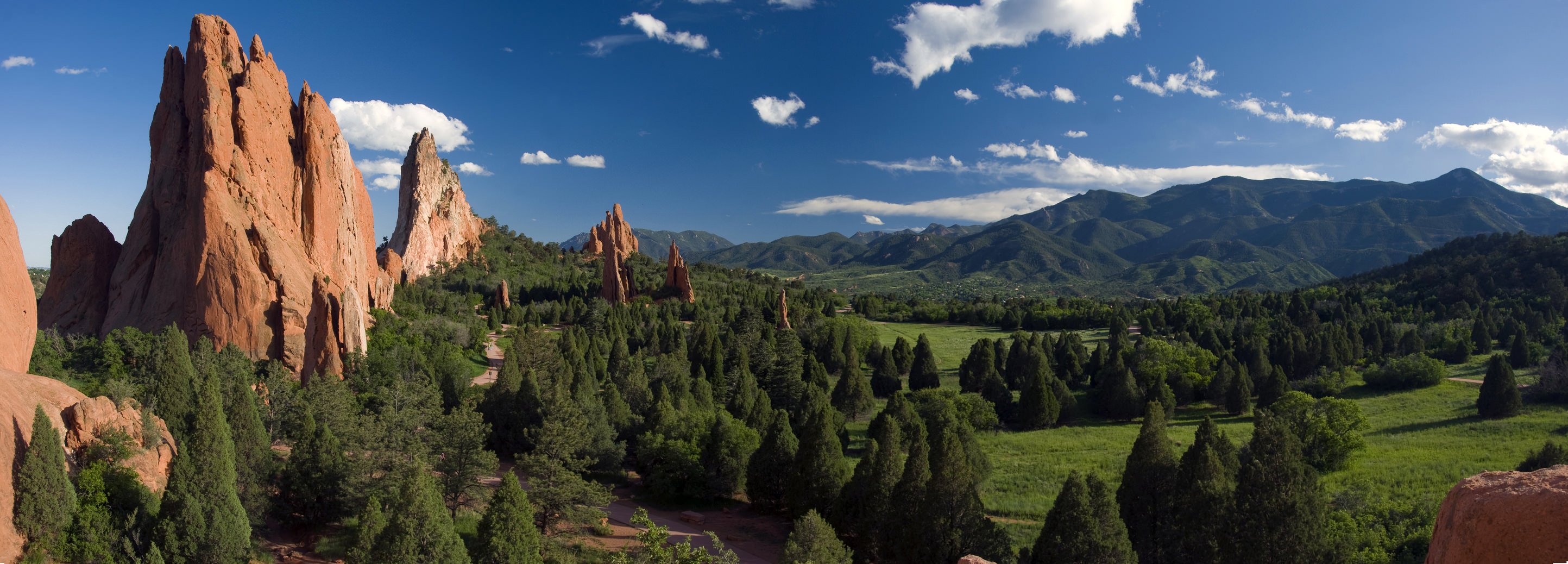
Another interesting detail to look for when photographing Colorado landscapes - or any landscape, for that matter - is interesting topography.
Mountain peaks jutting toward the sky, rolling hills, canyons, rivers, and so forth are all worthy subjects for your lens when photographing Colorado.
But if you ask me, one of the most interesting areas to photograph is the Garden of the Gods.
Just one look at the images above and below should be enough to clue you into why this place is a landscape photographer's paradise.
The rock formations themselves are interesting enough as it is, with their tall, thin columns rising toward the sky that adds depth and dimension to the shot.
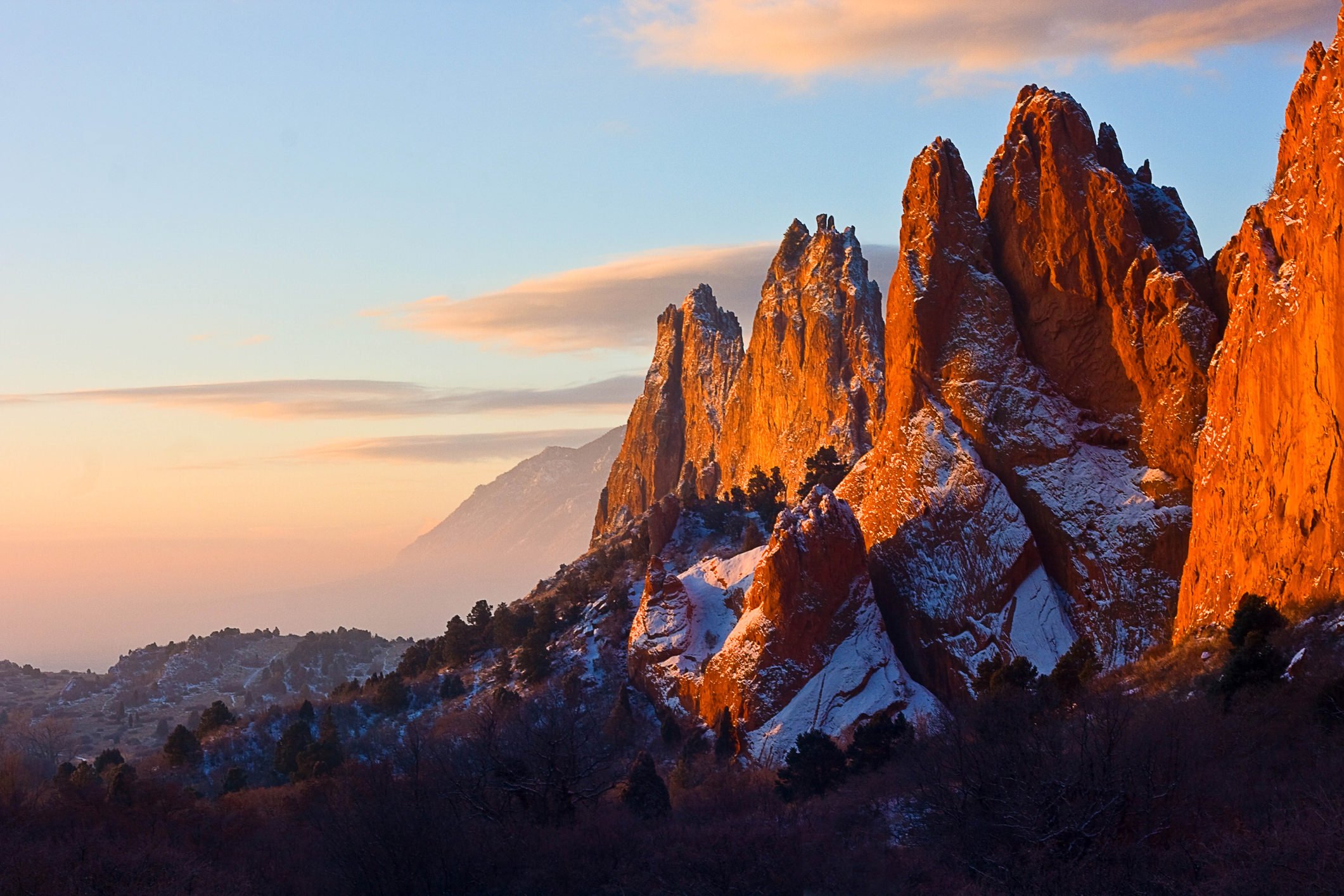
But add in the colors of a setting sun, the texture and shape of petrified trees, the colors of wildflowers or changing leaves, or a dusting of snow, and you have the makings for a photo that is certainly worthy of a spot on your living room wall.
No matter what the topography looks like, you'll need some of those elements - good lighting especially - along with the right gear and good ol' compositional and technical know-how to get the best shot.
But when you're working with such breathtaking landscape features, it sure makes your job a whole lot easier!
Go in Early Summer or Early Fall
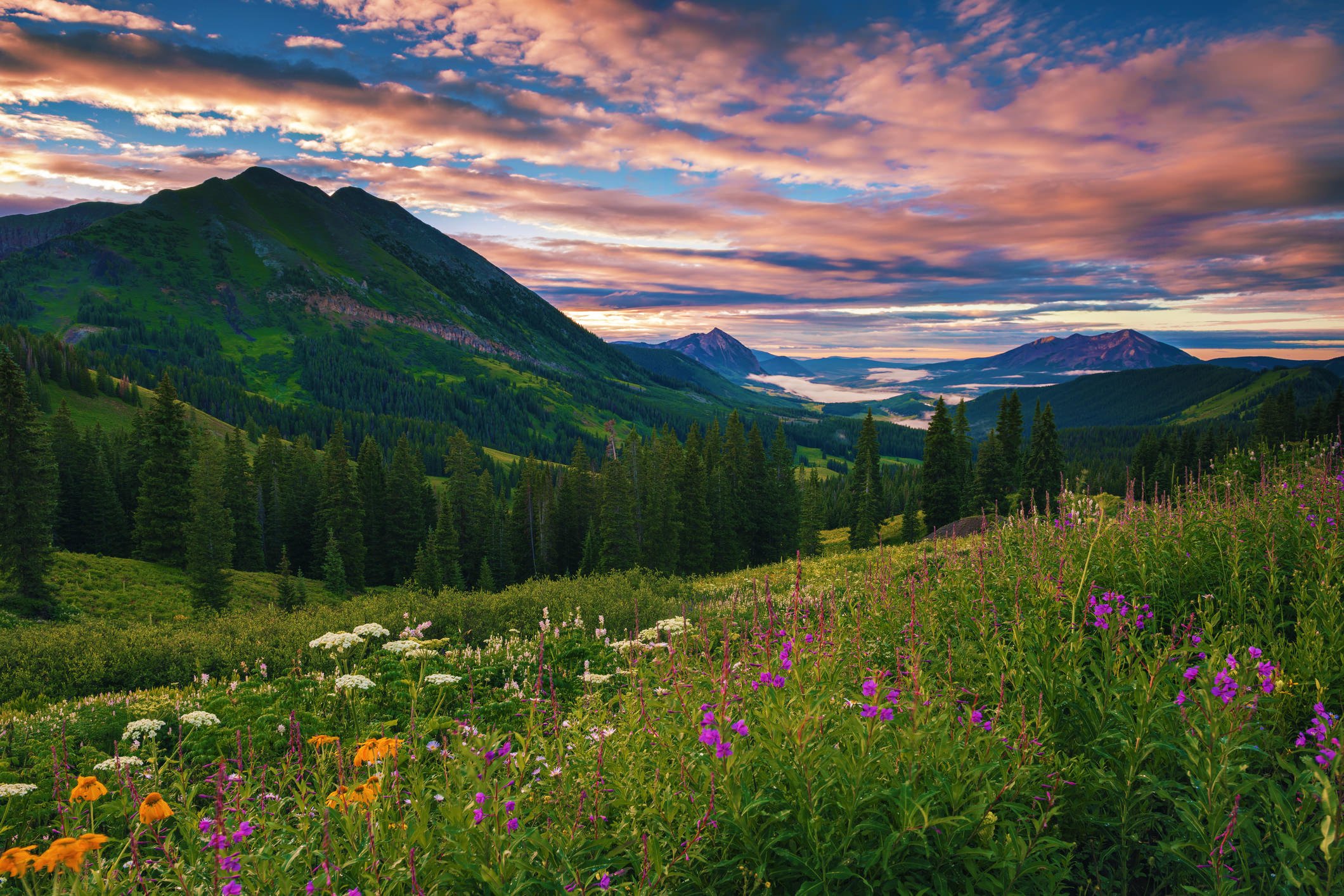
No matter where your photography exploits take you in Colorado, a visit in the early summer or early fall is ideal for a number of reasons.
First of all, early summer and early fall will help you avoid the massive crowds of tourists that make their way to Colorado each summer. The difference in the crowds from early June and mid-July is staggering. The same goes for mid-July to late September.
Not only are these times great for missing the crowds but you can also catch some gorgeous scenes while you're at it.
Early summer means mountain vistas are exploding with wildflowers. Wildlife sightings are typically common in early summer as well as the mountain thaw isn't that far in the past, and the animals are still active feeding, mating, and migrating.
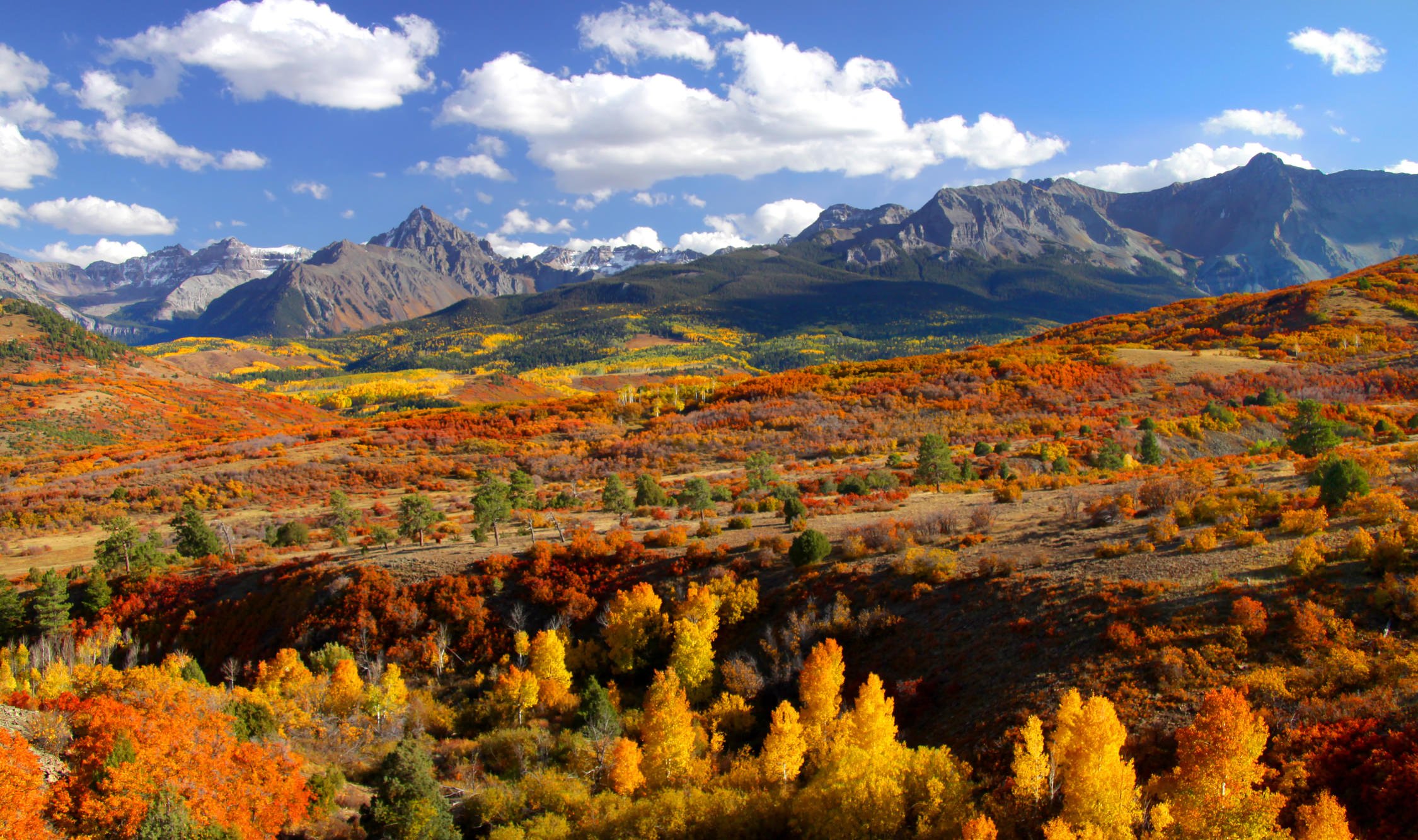
Early fall has its own beautiful surprises, namely, the fall colors as the leaves start to change. The explosion of yellow, orange, and red leaves throughout the Rockies is one of the most breathtaking sights you'll see in Colorado!
So, if possible, avoid setting out on your journey in the middle of the summer. Instead, plan your Colorado Photography adventure for early summer or early fall. And while you're at it, check out the Special Interest Tours Rockies By Rail trip that's offered at those exact same times and see the wonder of Colorado's landscapes by steam rail.
Just imagine riding an open-air car through the Colorado Rockies, your camera in hand, at the ready to photograph scenes like those pictured above.
Talk about a vacation! You'll see Colorado like you've never seen it before.
Special Interest Tours does it right with a full-scale charter train trip that takes you along the Cumbres-Toltec line, the Georgetown Loop, and the Durango-Silverton line.
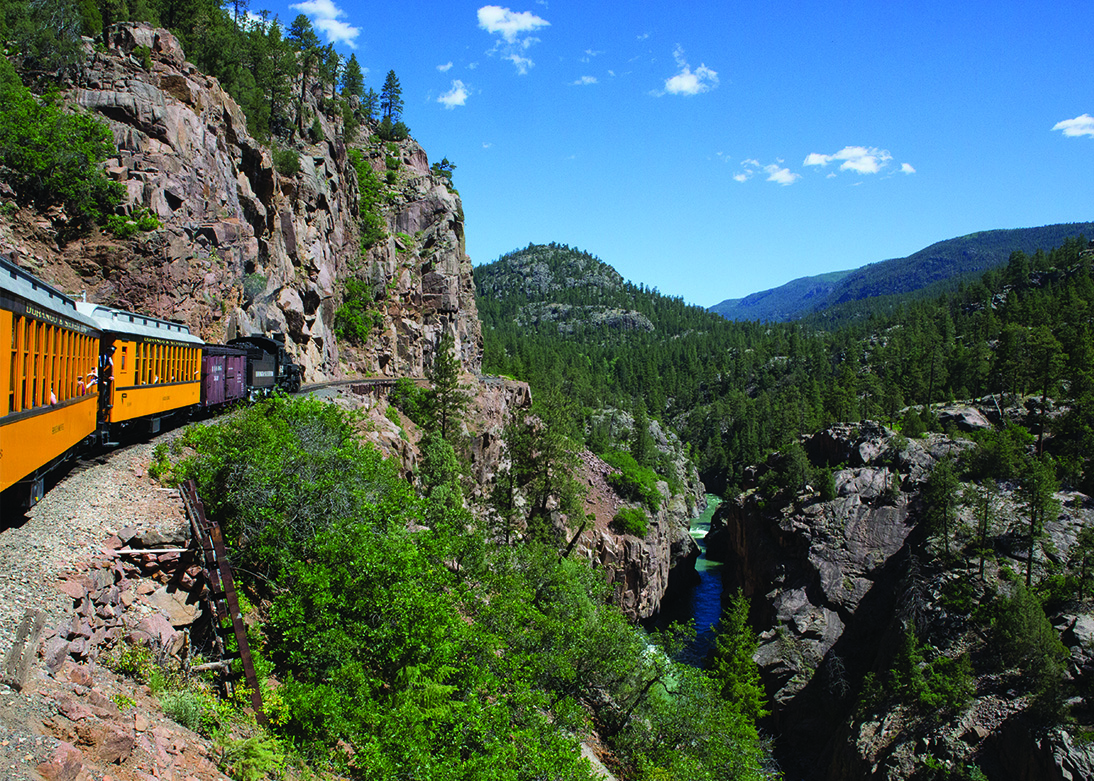
From these beautiful trains, you'll see the best Colorado has to offer, including the Rio Grande National Forest, the Royal Gorge, Pike's Peak, the Garden of the Gods, and your choice of spending the day in the historic town of Durango or Mesa Verde National Park. And that's just the tip of the iceberg.
Throw in a once-in-a-lifetime opportunity to ride some of the most beautiful rail lines in the country, a chance to rub elbows with other train and photography enthusiasts, and hotel accommodations, two meals a day, and various private tours, and you've got the makings for a memorable trip through the Colorado Rockies.
Special Interest Tours is offering this trip twice this year: May 30-June 7 and September 24-October 2, 2017. Visit their website for additional details so you can start planning your Colorado landscape adventure today!
We Recommend
If You Haven't Seen India this Way, You Haven't Seen India
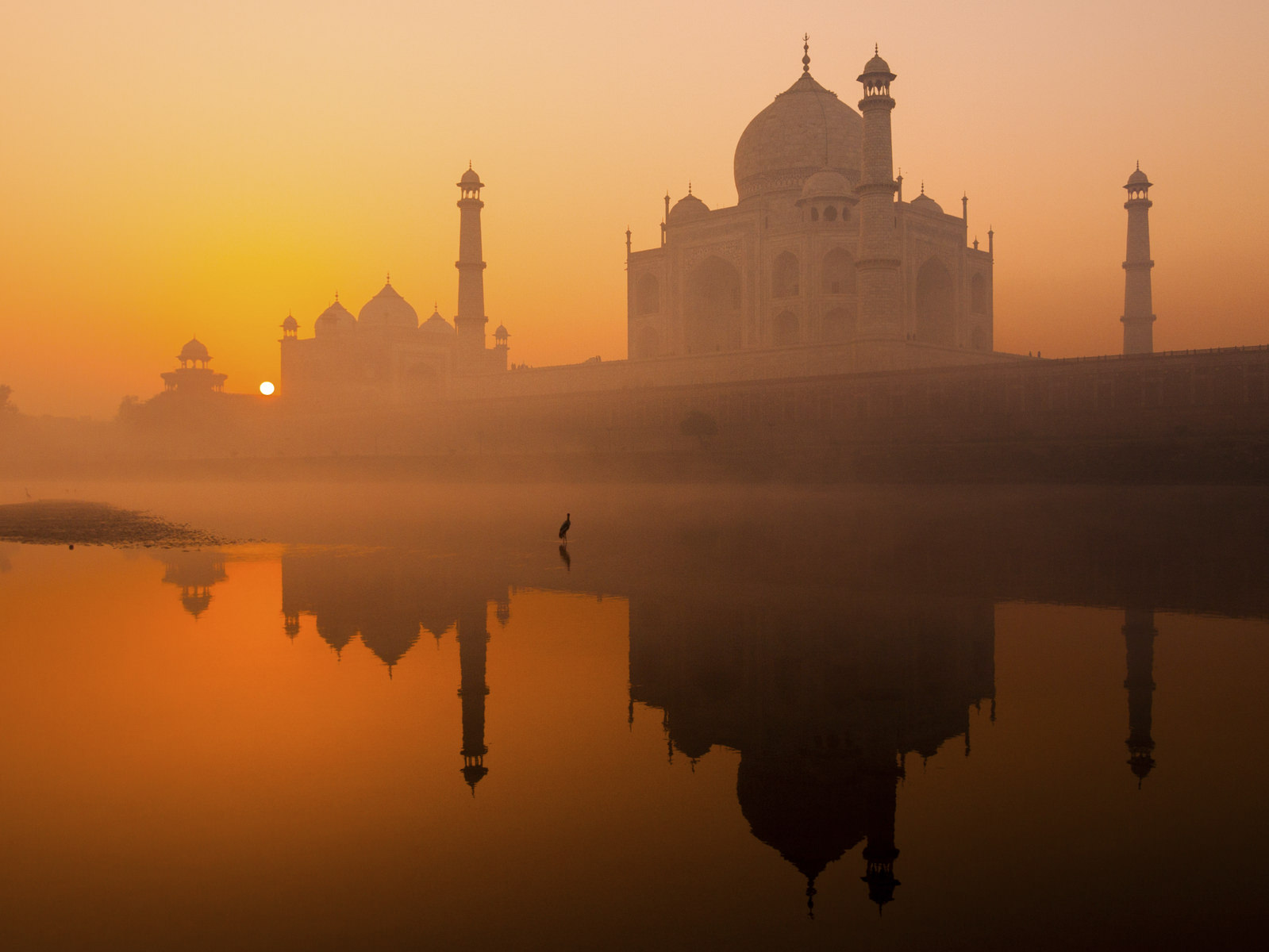
Every popular travel destination holds its own special intrigue for photographers. India is certainly no exception, with a mystique all its own. It's a cultural experience like no other, from its people to the cuisine to music and dance. It boasts some of the most incredible architectural wonders on the planet – who wouldn't love the opportunity to photograph the Taj Mahal at sunrise or any of the wide variety of temples with architecture as varied as the landscape?
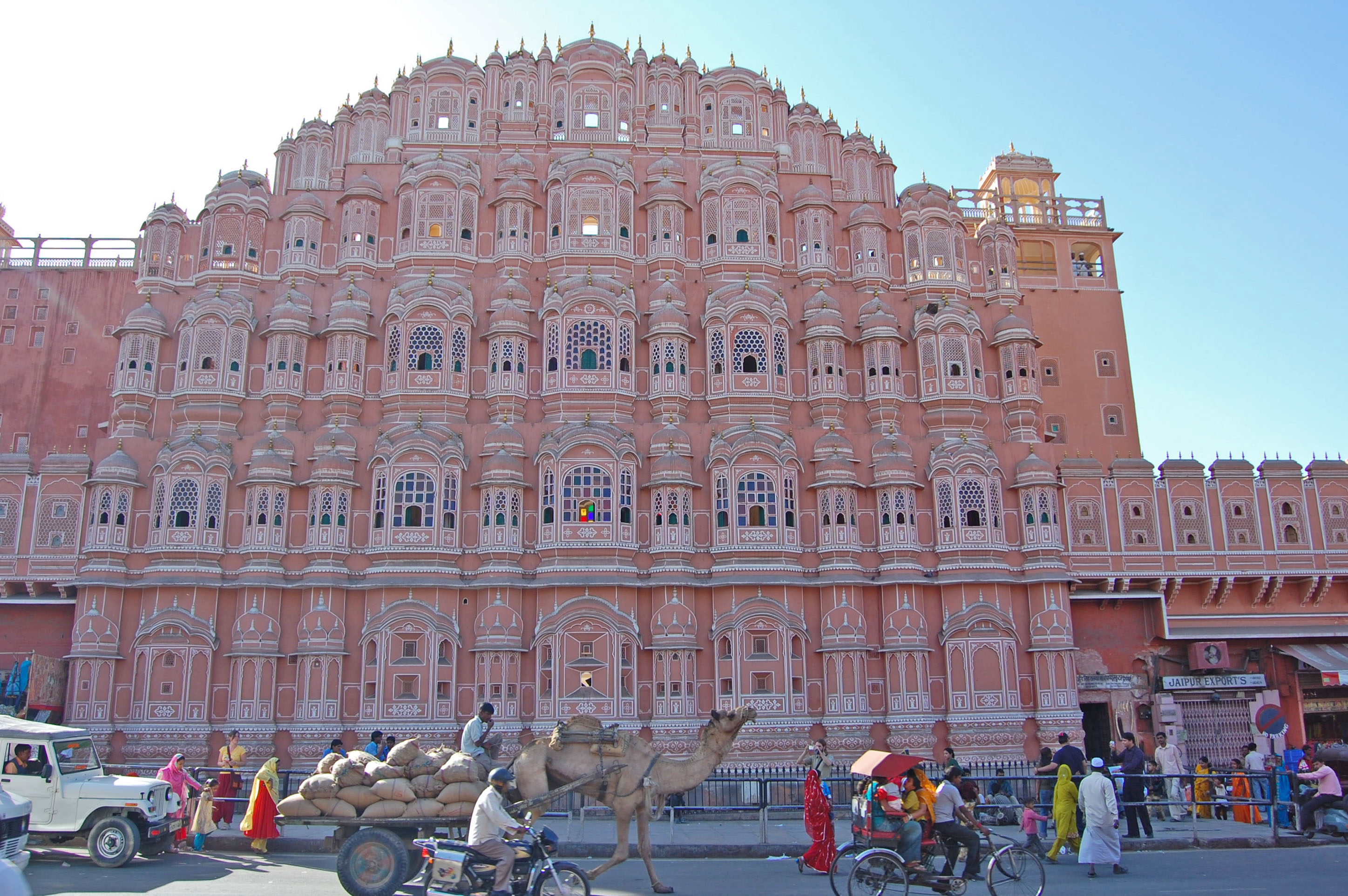
There's another, lesser-known, but no less spectacular feature of this country: its railways. These historic, scenic pathways and the trains that travel them are a part of India's heritage and a wonderful way to see what the country has to offer from a unique perspective. Traveling this way, you'll immerse yourself in the color and grandeur of this land in a way that can't be matched elsewhere. That's why we're excited to tell you about an opportunity that you won't want to miss: The Heritage Trains of India Tour for 2017.
This incredible and unusual photographic tour will take you to the Taj Mahal, a Tibetan Monastery and other “standard” tourist sites, but you'll see and do so much more! Walk the streets of small villages. Visit the Rewari Steam Centre and Himalayan Mountaineering Institute. See Delhi in all its splendor. For 15 days and 14 nights, you'll You'll experience the East that you've heard about, while exploring vistas and destinations that only the rails can provide.
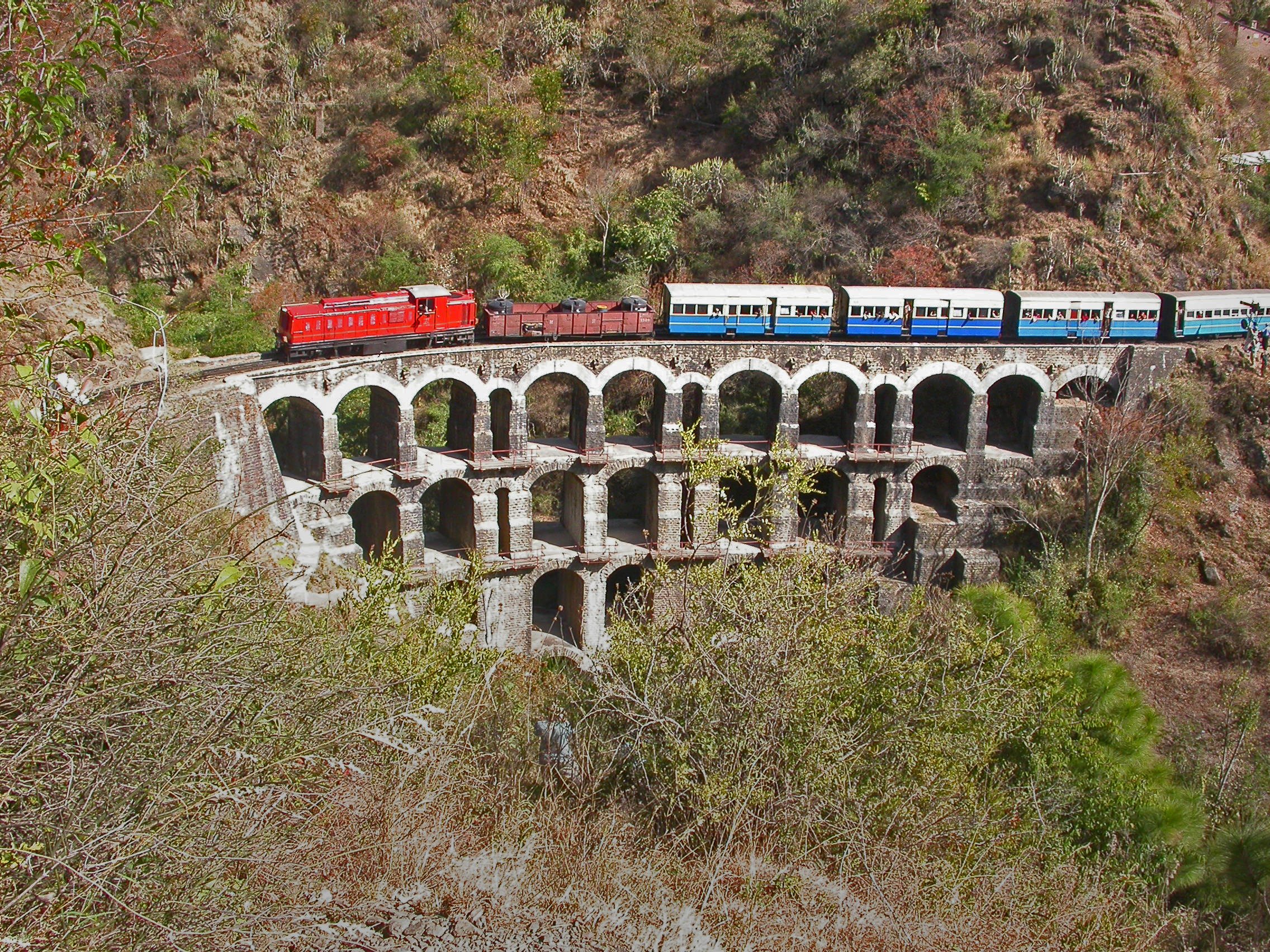
Last, but far from least, this unique expedition gives you the experience of the trains and rail systems themselves. The famous “Toy Train” of Darjeeling's Himalayan Railway and the Kalka-Shimla Railway are only two of the routes you'll follow, each of which is an experience worth the trip. You won't believe the number of photo opportunities you'll find along the way and at your stops.
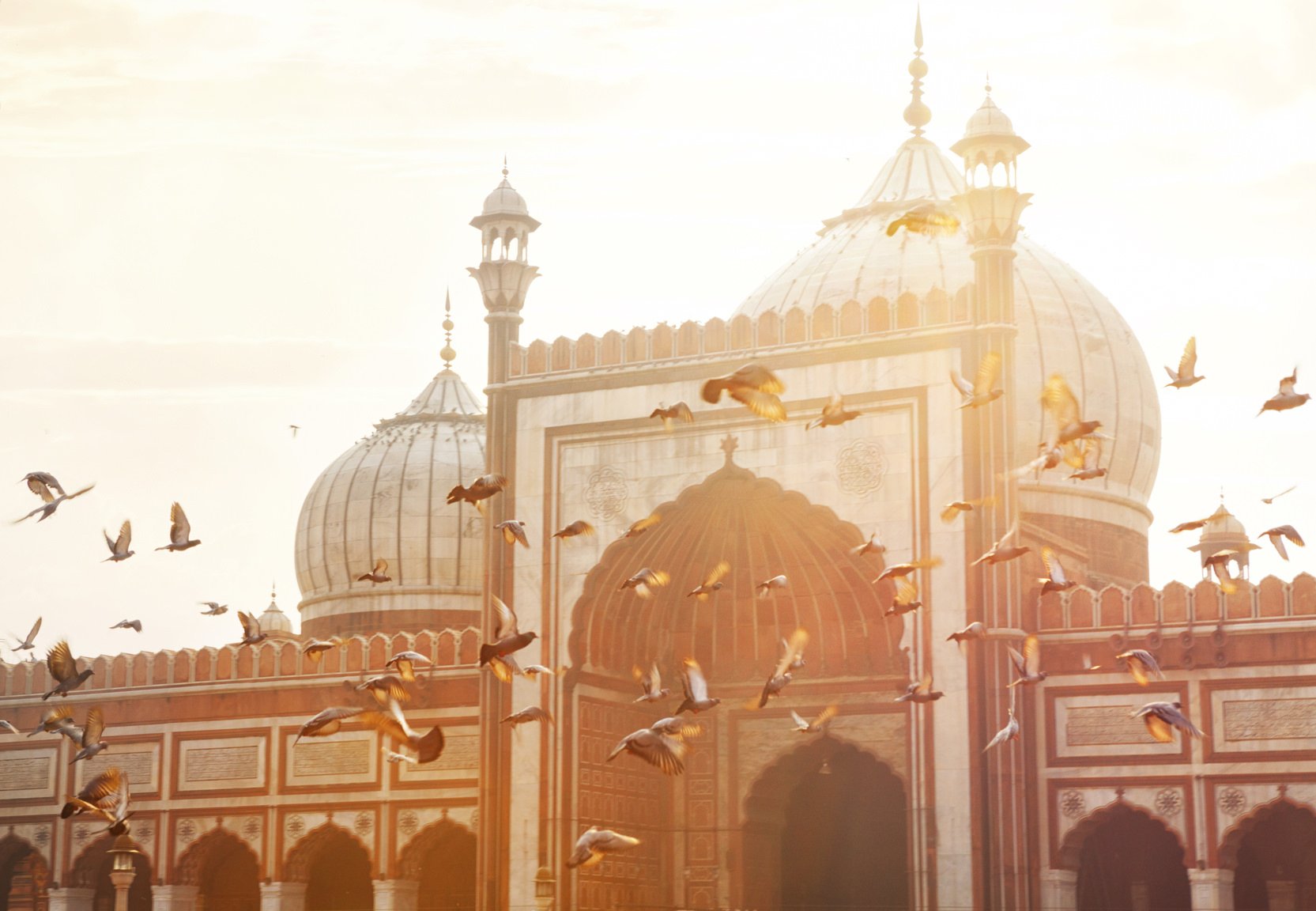
This one-of-a-kind tour will expose you to India from its most rugged terrain to luxury accommodations and fine dining. It's offered exclusively by Special Interest Tours and it's set in February of 2017, so there's time to book, if you hurry. The deadline is December 15, 2016 and this one will fill up fast. Find out more and get your spaces reserved today.
P.S. If India isn't your “cup of tea”, check out their other offerings coming up next year. Whether your interest lies in paddle boarding in the Bahamas or shooting the solar eclipse in Colorado and Wyoming, Special Interest Tours has the package for you!
We Recommend
These Breathtaking Photos Show Why Peru Should Be Your Next Photography Destination
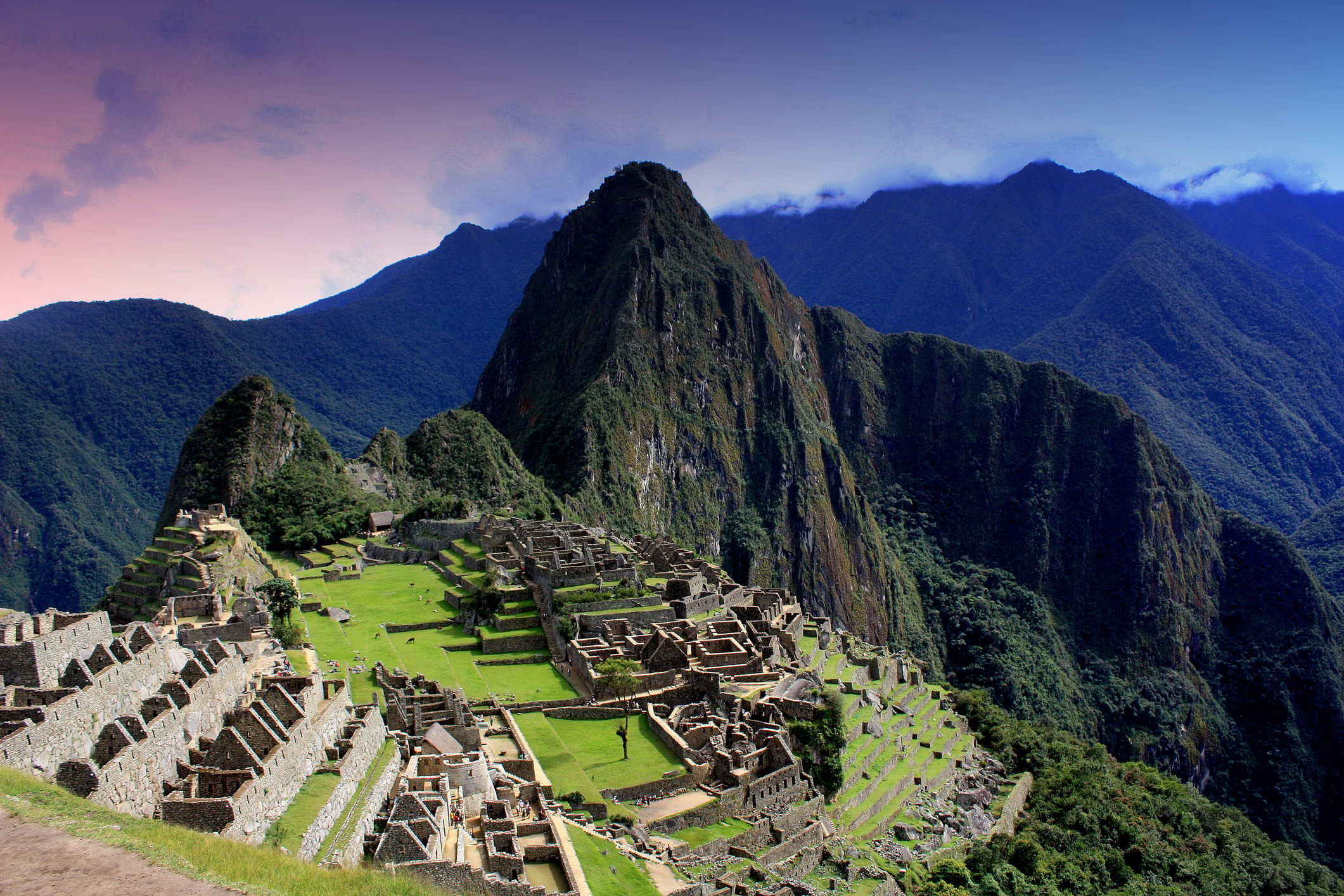
The great thing about travel photography is that as you travel, you get a multitude of opportunities to take all sorts of photos.
Portraits, landscapes, street scenes, nature and wildlife, cityscapes...you name it, you'll encounter it on a typical journey.
There are obviously a ton of places you can travel for a photography adventure.
I know a lot of people from the U.S. that like to hop the pond and explore Europe with their camera.
Conversely, a lot of folks from Europe come this way to explore the great American landscape.
A personal goal of mine is to go on safari in Africa. Talk about a place to delight the eyes and your camera!
But as I've discussed travel photography with friends and colleagues, one place keeps coming up...
Peru.
I've never had the pleasure of visiting Peru but based on what I'm hearing from other photographers, it's a place I need to visit, and soon.
With that in mind, I got together with a few photographers that have experienced Peru, and we put together this quick collection of photos from one of the most gorgeous places on earth.
We've even included a few tips about how to get these same kinds of photos!
Machu Picchu
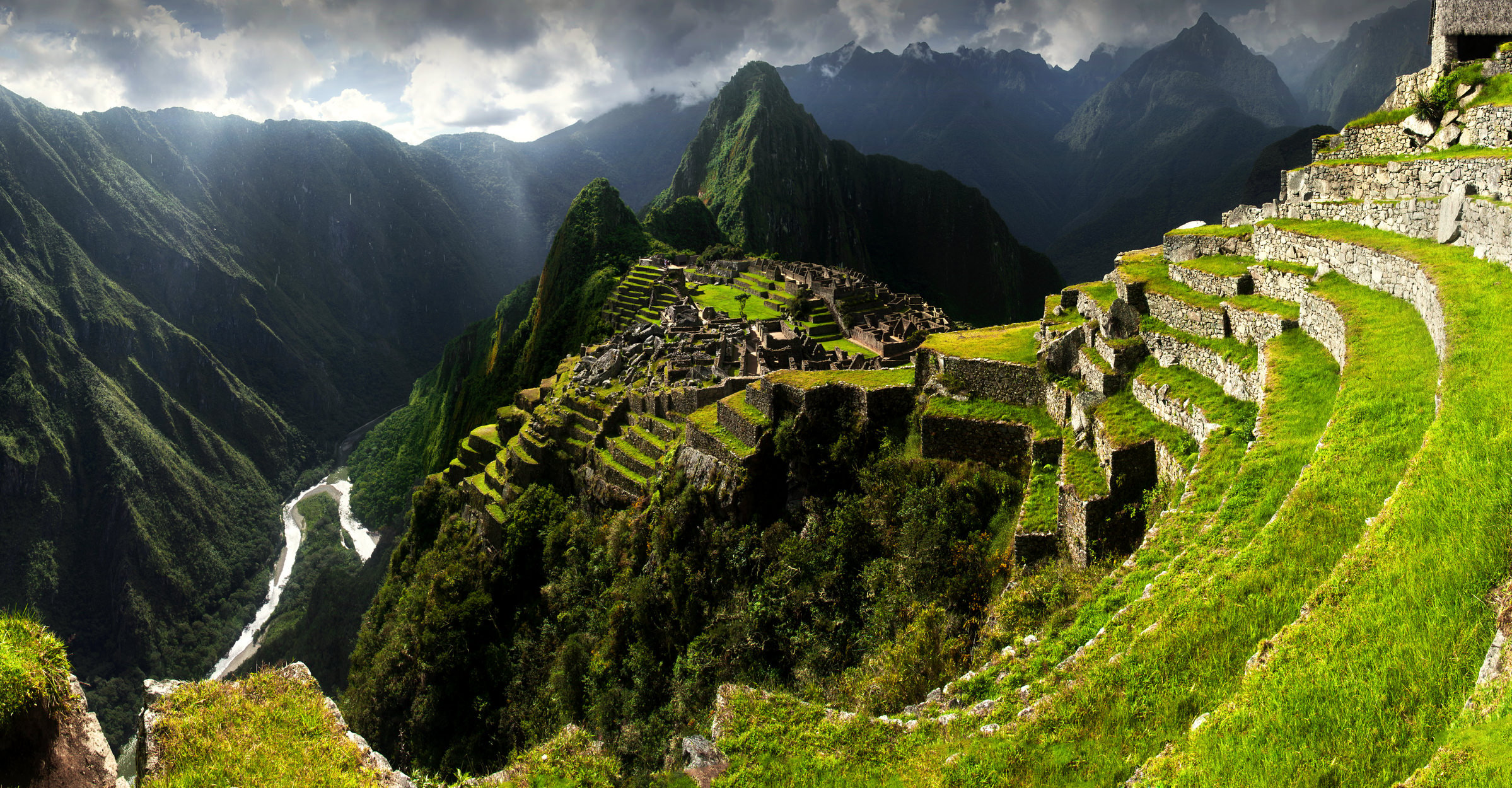
The first thing that many non-Peruvians think of when they think of Peru is Machu Picchu.
For me (and many of my compatriots), this is among the holy grail of sites to visit with our cameras.
One look at the image above tells you why.
Most of the "postcard shots" of Machu Picchu are taken from closer to the citadel, a point near the end of the walls that extend from the foreground to the midground on the right side of the image above.
But by taking a position like this one, you have access to creating a wider shot of the area, which not only gives you a clue as to the fantastic dropoff on the side of the city but also puts some context to just how remote and high up this ancient city actually is.
What's more, this image makes great use of leading lines - both those mentioned earlier on the right side of the shot and those created by the sharp, pointed peaks directly behind the city which help to give the image some verticality.
The result is a gorgeous image that compels you to start looking for ways to visit Peru sooner rather than later! See a few other tips and tricks you can use to get better photos of Machu Picchu in the video below from Adorama TV:
Lima, the Capital City
As I mentioned in the introduction, the great thing about traveling is that you can take photos of all sorts of subjects.
Though Peru is most well known for its landscapes and people, the city of Lima is a beautiful subject for photos as well, as you can see in the image below.
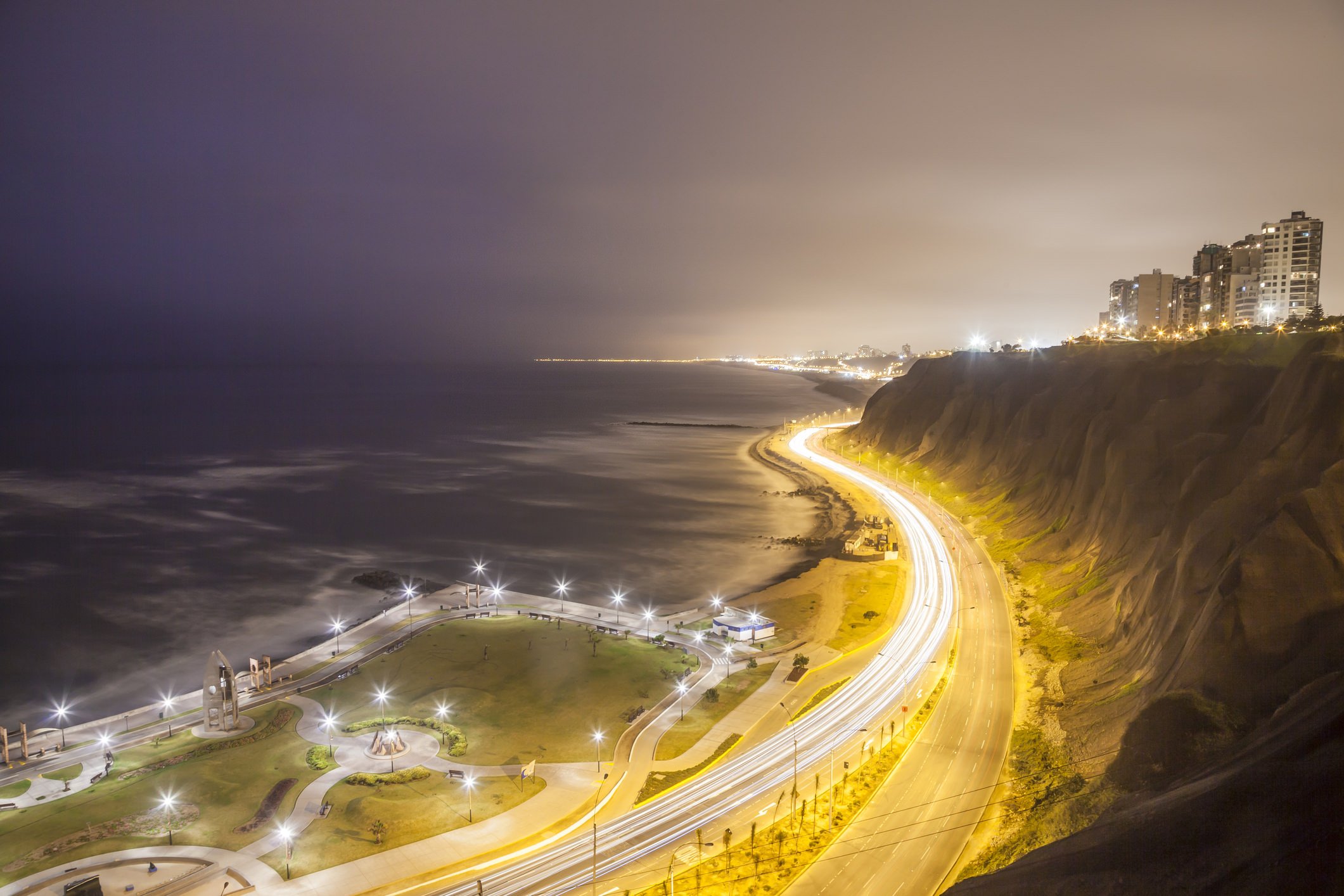
Even if you aren't a master of cityscapes or long exposures, travel photography is all about expanding your horizons and visiting new places, meeting new people, and trying new things.
When visiting Peru, take some time to try your hand at a long exposure like the one above.
In this case, the image benefits from the high perspective looking down on the highway.
Rather than giving us the typical street-level view, this higher perspective allows us to see a much longer light trail created by the cars on the highway.
And, like the previous image of Machu Picchu, the photographer managed to incorporate leading lines that take us along the coastline and direct our eyes toward the lights of the city in the background.
That makes for one active experience when viewing this photo!
Peruvian People
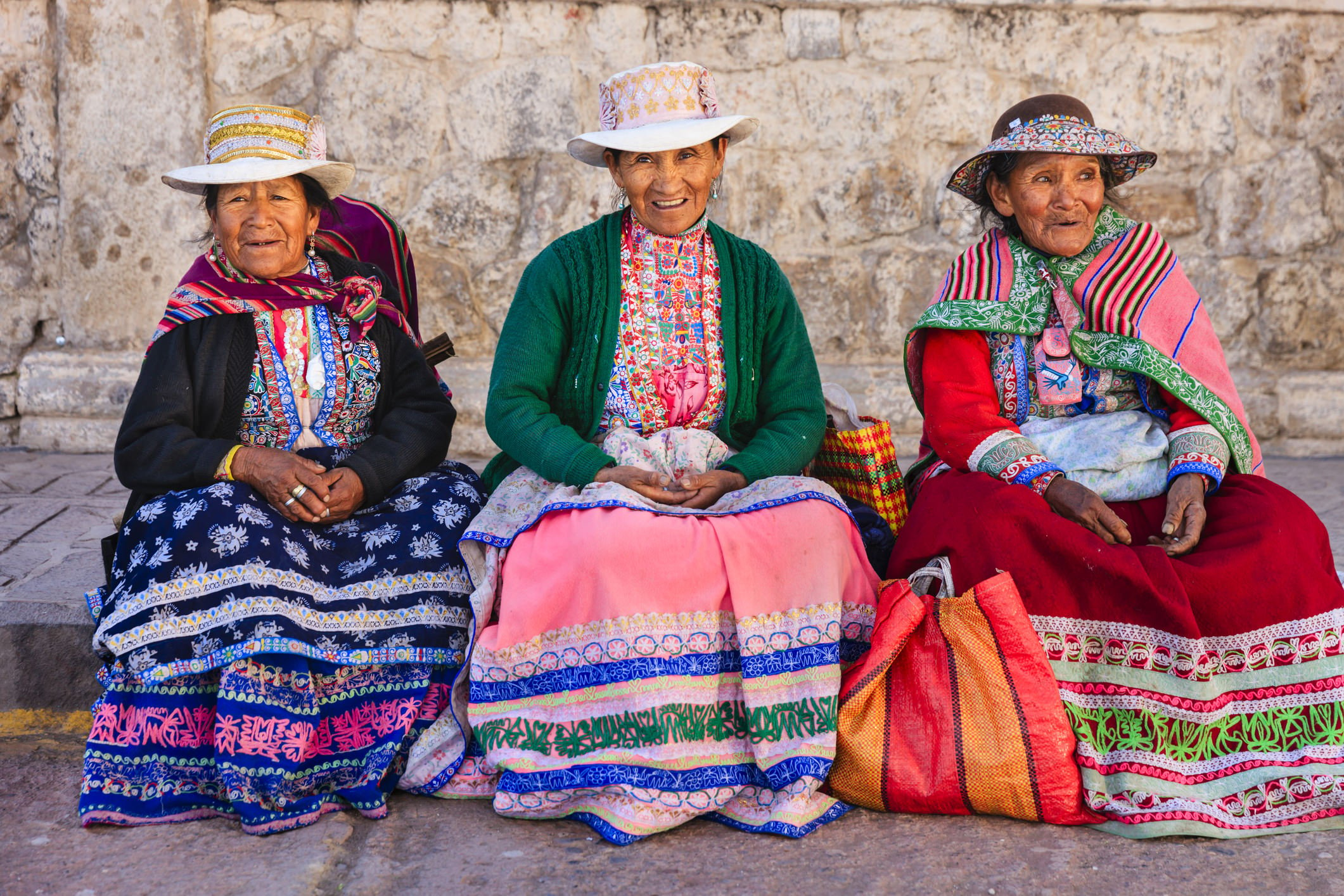
No matter where you travel in the world, you'll be hard-pressed to find a people and a culture that's as vibrant and colorful as those in Peru.
That makes taking portraits on your trip to Peru an absolute must.
The people of Peru are friendly and welcoming, and so long as you approach them with a smile on your face and in a respectful manner, you shouldn't have any difficulty taking authentic portraits of people you encounter on your travels.
In the image above, the simplicity of the shot - the nondescript background and even lighting - help us focus on the two primary features: the faces of the women and their fantastically colorful dresses.
You'll encounter gorgeous patterns and colors on your journey, and when you do, it's important that you keep other elements in the shot more subtle so you can highlight the beauty of the colors, patterns, and textures you'll find along the way.
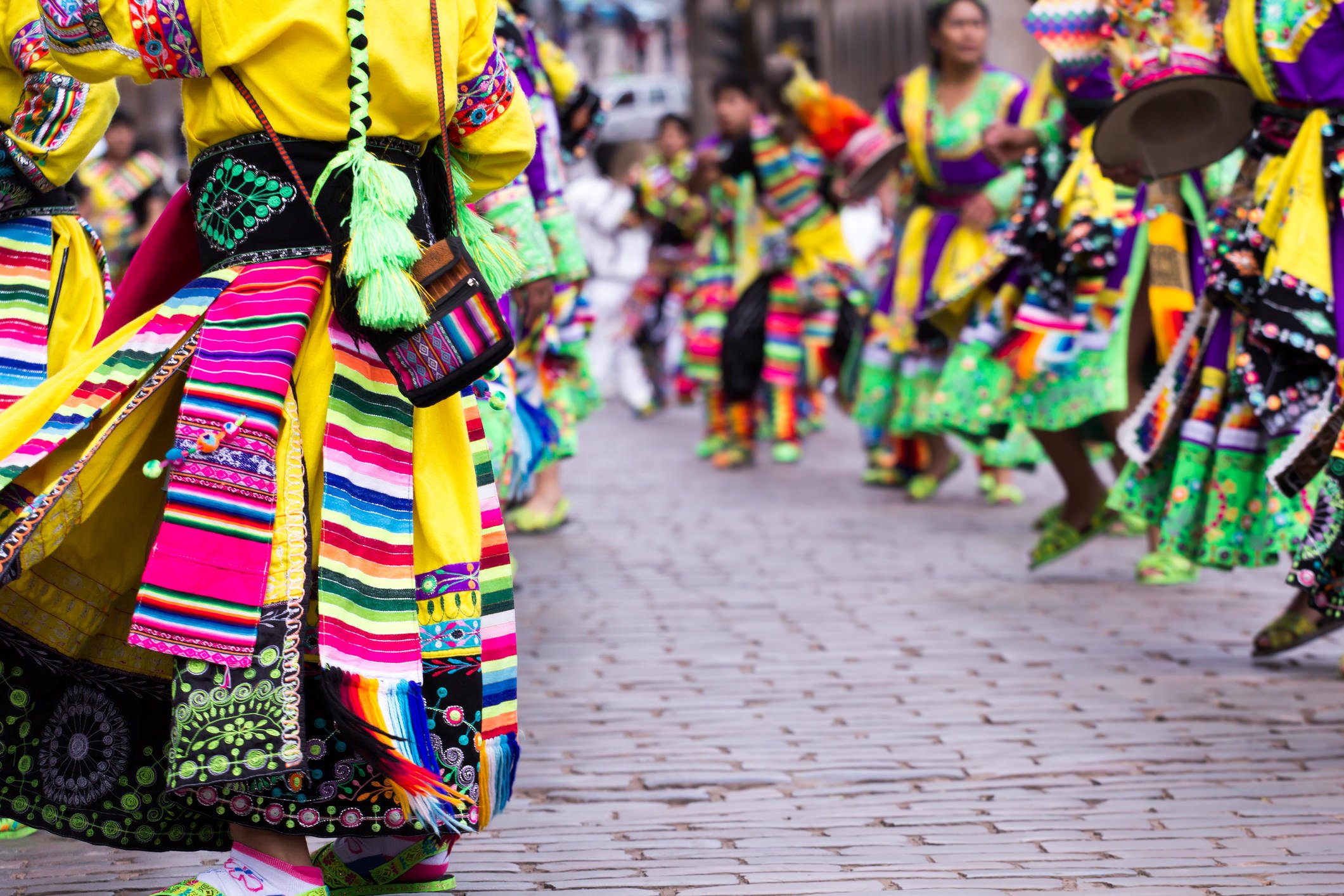
Of course, another way to show off the colors and textures of Peruvian culture is to make them the subject of your photos.
In the image above, rather than creating a traditional portrait, the photographer chose instead to focus on the wardrobe of the dancers as they make their way along a parade route in Cusco.
By creating a faceless portrait, the wardrobe of the dancers - in it's colorful and vibrant glory - becomes the star of the shot.
Remember, traveling is an opportunity to stretch your boundaries. Take that opportunity to try something unique like a faceless portrait.
Peru By Rail
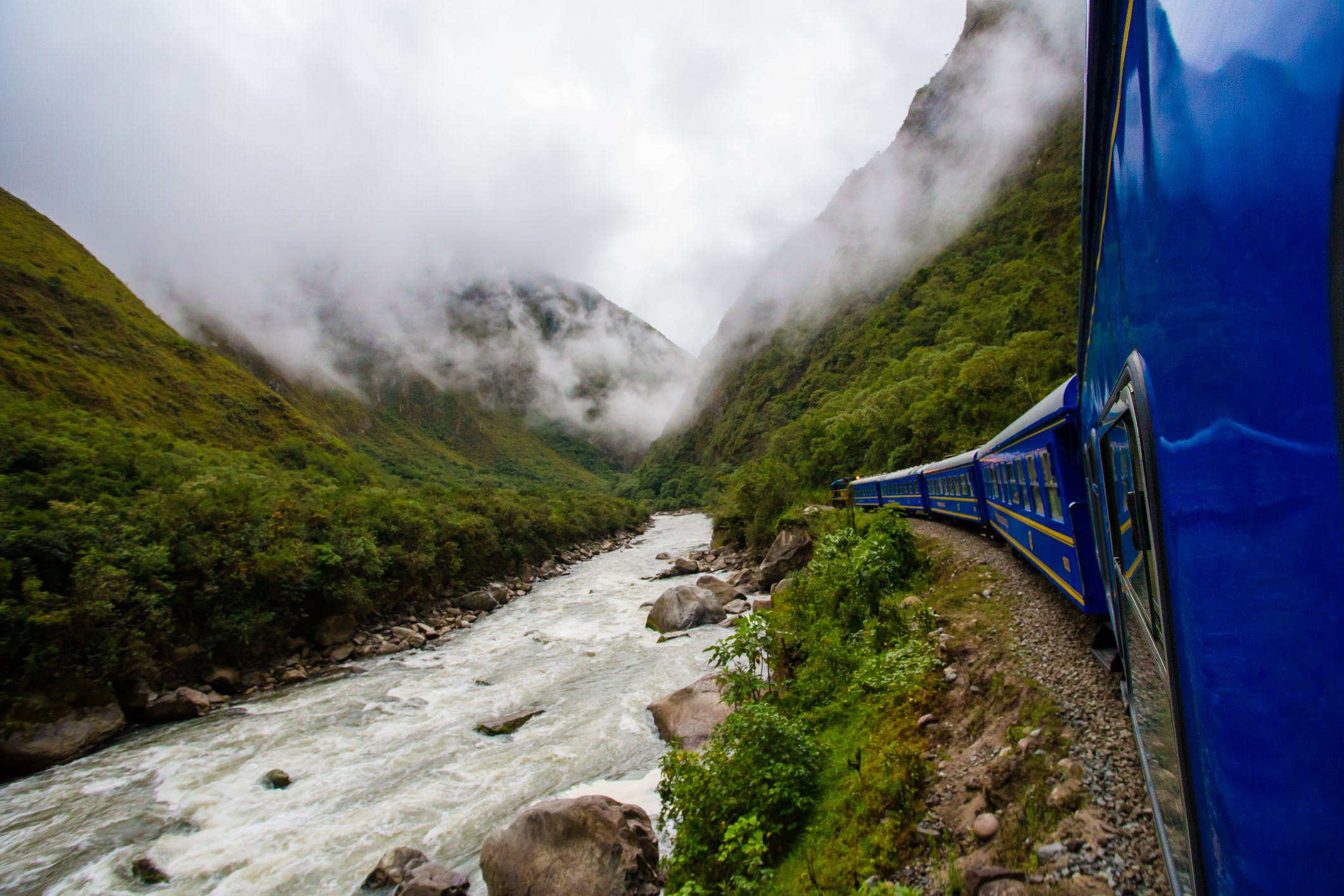
Speaking of stretching your boundaries, a great way to travel around Peru and see all the sights mentioned above (and more!) is to travel by train.
As you can see in the image above, there's plenty of beauty to behold as you crisscross this gorgeous country in the comfort of a train car.
What's more, you can hook up with a group like Special Interest Tours that takes care of all the in-country details for you, from the train rides to day trips to explore Machu Picchu to meals and hotels and everything in between.
Their Ultimate Peruvian Railway Experience is the pinnacle of Peruvian travel for photographers and train enthusiasts alike.
The tour includes exclusive passage on the Ferrocarril Central Andino Railway main line, which takes you to nearly 15,700 feet above sea level, taking you through breathtaking mountain scenery and giving you firsthand views of natural wonders like the Junin Flamingo Lagoon, all from open train cars that give you unobstructed vantage points for taking photos along the way.
But your participation in the Ultimate Peruvian Railway Experience doesn't mean you're limited to travel by train.
Special Interest Tours also provides coach buses that take you off the tracks and into the surrounding territory, so you have opportunities to photograph landscapes like Lake Titicaca and the unique reed boats that inhabitants of the area make, like those seen below.
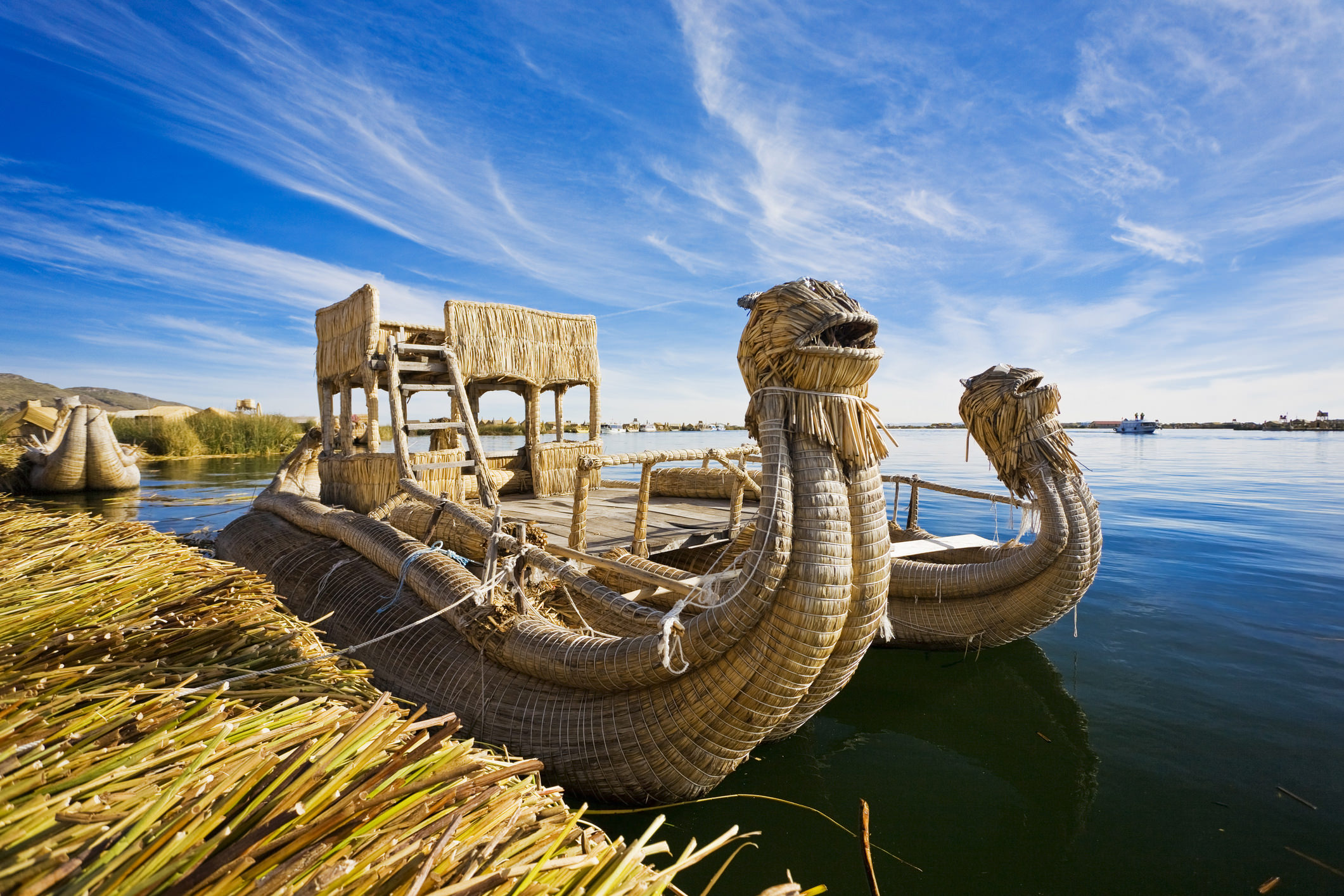
In fact, since Special Interest Tours is all about immersing you in the local culture, you'll have a chance to take a boat ride to one of the many man made islands in Lake Titicaca.
There, you can try your hand at creating portraits of the locals, crafting a photo of the sunset as the light fades over the lake, and even give night photography a shot as you find yourself under a blanket of stars.
The tour even includes a foray on the Andean Explorer, a railway that takes you through the Andes Mountains, along the Huatanay River to Cusco, from which you can venture out to explore Machu Picchu.
In the end, there are plenty of places to visit in the world that are sure to delight you as a traveler and as a photographer, but for my money, Peru has to be at the top of the list.
From iconic sites like Machu Picchu to breathtaking landscapes like the Andes Mountains to the people and culture of this wonderful nation, there's just too much beauty to pass up!
If you're interested in seeing all of these sights for yourself, visit Special Interest Tours to learn more about their two-part Ultimate Peruvian Railway Experience. The trip is scheduled for September 26 to October 5, 2017, so start planning your adventure now!
